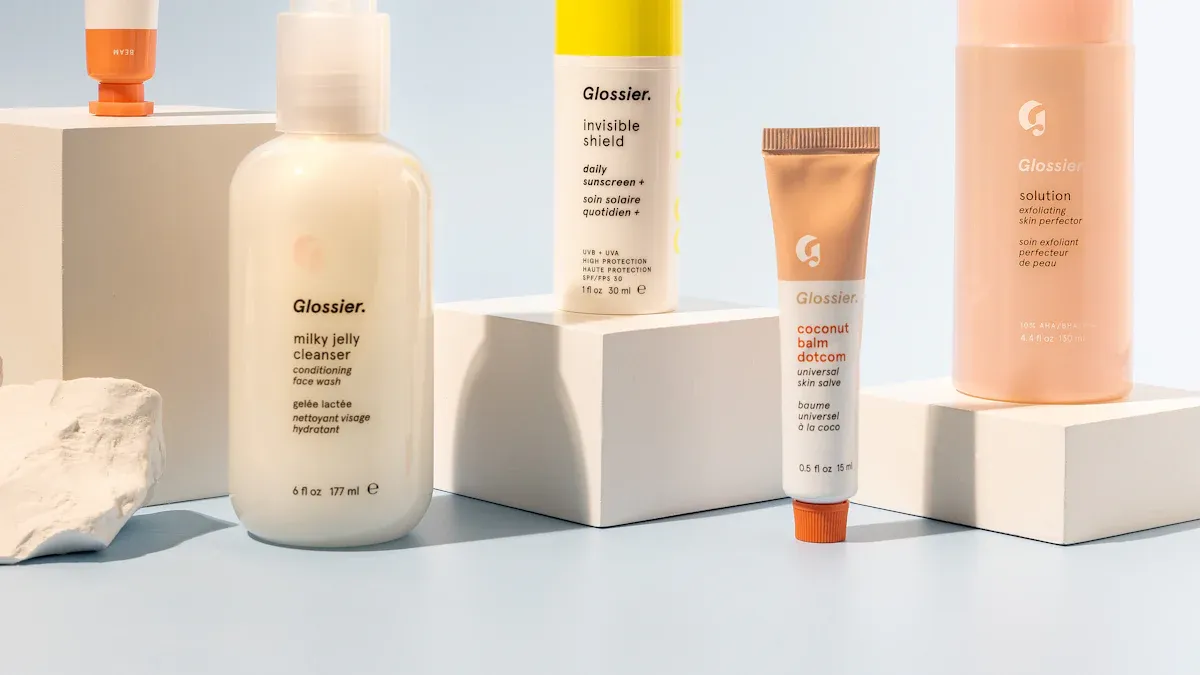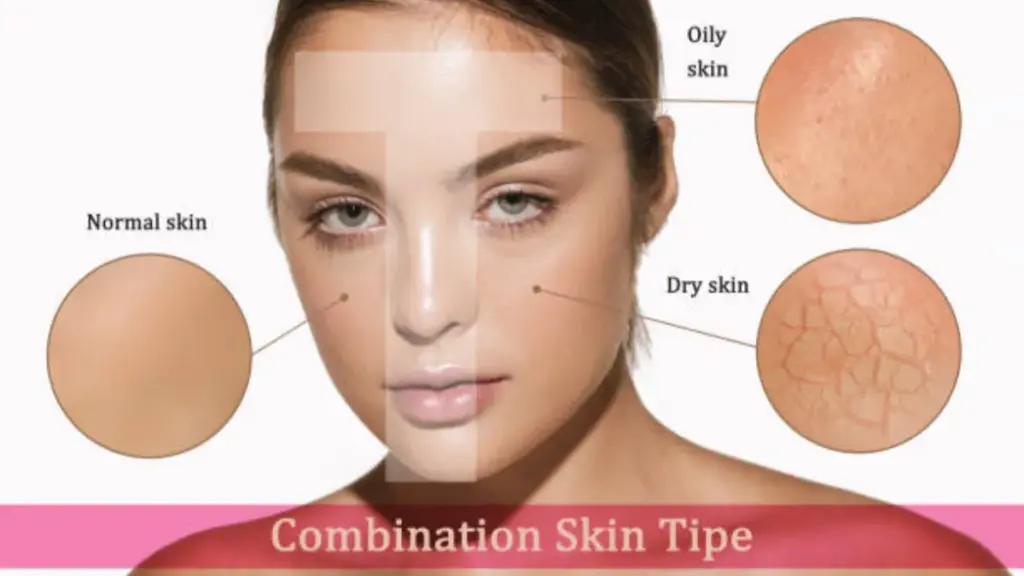
La transparencia de los ingredientes se ha vuelto esencial para que las marcas de belleza globales satisfagan las crecientes demandas de los consumidores.. Los consumidores examinan cada vez más las etiquetas de los productos, con un 229% Aumento de las búsquedas de ingredientes de belleza registradas en 2021. Muchos confían en sus comunidades para obtener información sobre sus productos., enfatizando la necesidad de divulgaciones claras. Cumplir estas expectativas presenta desafíos, especialmente con diferentes regulaciones regionales. Las prácticas transparentes no sólo ayudan a garantizar el cumplimiento sino que también fomentan la confianza., un factor crítico en el competitivo mercado actual. Priorizando la transparencia, Posicionas tu marca como creíble y centrada en el consumidor..
Comprender los requisitos de transparencia de los ingredientes

Regulaciones de declaración de ingredientes globales clave
Navegar por las regulaciones de declaraciones de ingredientes es esencial para las marcas de belleza que operan a nivel mundial. Estas regulaciones garantizan que los consumidores tengan acceso a información precisa y transparente sobre los productos que utilizan.. Sin embargo, Los requisitos varían significativamente entre regiones., hacer del cumplimiento una tarea compleja.
Los consumidores de hoy exigen Transparencia en el abastecimiento y eficacia de los ingredientes.. Adultos más jóvenes, En particular, muestran una mayor preocupación por la seguridad de los ingredientes. Ha aumentado la actividad investigadora en categorías como el cuidado de la piel y el cabello., reflejando la creciente importancia de los mensajes centrados en los ingredientes.
Para comprender el panorama global, considere estas estadísticas:
Descripción estadística | Valor |
|---|---|
Productos con al menos un ingrediente problemático | |
Número total de ingredientes únicos identificados | 2,279 |
Porcentaje de sustancias químicas con una 'D’ o 'F’ clasificación | 3% |
Productos químicos marcados con lagunas de datos | 30% |
Productos químicos considerados más seguros (grado de 'C’ o superior) | 66% |
Estas cifras resaltan la necesidad de que las marcas cumplan con los requisitos reglamentarios y al mismo tiempo garanticen la salud y seguridad del consumidor.. Proporcionar listas detalladas de ingredientes y declaraciones precisas genera confianza y credibilidad en el mercado..
Desafíos para lograr la divulgación de ingredientes en todas las regiones
Cumplir con los requisitos de divulgación de ingredientes en diferentes regiones presenta desafíos únicos. Diversidad regulatoria es un obstáculo importante. Los países definen, clasificar, y nombrar los ingredientes cosméticos de forma diferente, llevando a confusión e inconsistencia. Por ejemplo, un ingrediente considerado seguro en una región puede enfrentar restricciones en otra.
Otro desafío es la falta de estandarización.. Sin un formato universal para la declaración de ingredientes, Las marcas deben adaptarse a diferentes expectativas.. Este proceso puede consumir mucho tiempo y recursos.. Muchas empresas también luchan con limitaciones de recursos., especialmente cuando se trata de ingredientes complejos o patentados.
He aquí una mirada más cercana a estos desafíos.:
Tipo de desafío | Descripción |
|---|---|
Diversidad regulatoria | Diferentes países tienen diferentes definiciones., clasificaciones, y nomenclatura de ingredientes cosméticos, llevando a confusión e inconsistencia. |
Falta de estandarización | No existe un formato o método universal para divulgar información sobre los ingredientes., lo que genera discrepancias en lo que se requiere entre regiones. |
Limitaciones de recursos | Muchas empresas carecen de los recursos necesarios para recopilar y verificar la información de los ingredientes., especialmente para ingredientes complejos o patentados. |
Para navegar las complejidades de la transparencia global de ingredientes, debe mantenerse informado sobre la evolución de las regulaciones e invertir en sistemas sólidos para su cumplimiento.. Este enfoque garantiza que su marca siga siendo competitiva y al mismo tiempo prioriza la salud y seguridad del consumidor..
Pasos para lograr el cumplimiento de la transparencia de los ingredientes
Realización de auditorías integrales de ingredientes
Realizar auditorías de ingredientes es el primer paso para garantizar el cumplimiento. Estas auditorías le ayudan a identificar inconsistencias, verificar la seguridad de los ingredientes, y alinearse con los estándares regulatorios. Centralizando la información de los ingredientes, puede optimizar los flujos de trabajo y reducir los errores humanos. La automatización juega un papel clave aquí, Minimizar errores en la creación de etiquetas y acelerar los ciclos de desarrollo de productos..
Los beneficios de las auditorías integrales incluyen:
Reducción del error humano y mejor control de calidad..
Ciclos de desarrollo de productos más rápidos gracias a datos detallados de los ingredientes.
Cumplimiento normativo mejorado a través de actualizaciones automatizadas.
Optimización de costos mediante la reasignación de recursos de tareas manuales..
Eficiencia operativa mejorada con seguimiento centralizado de ingredientes.
Una comparación entre las auditorías integrales y los métodos de cumplimiento tradicionales destaca su eficacia:
Aspecto | Auditorías integrales de ingredientes | Métodos de cumplimiento tradicionales |
|---|---|---|
Demanda del mercado | Moderado | |
Requisito de cumplimiento | Estricto y detallado | Estándares básicos |
Crecimiento de la certificación | Aumento rápido (P.EJ., GlobalGAP) | Adopción más lenta |
Impacto en los productores | Obligatorio para el acceso al mercado | Opcional, menos impactante |
Cambio de gobernanza | Liderado por el sector privado | Dirigido por el gobierno |
Adoptando auditorías integrales, puede cumplir con estrictos requisitos de cumplimiento y, al mismo tiempo, generar confianza con los consumidores que valoran la transparencia de los ingredientes..
Asociación con proveedores transparentes
Los proveedores transparentes son esenciales para la divulgación de ingredientes y el éxito del cumplimiento. Asociarse con proveedores que priorizan la trazabilidad garantiza que sus productos cumplan con las expectativas de los consumidores y los estándares regulatorios.. Por ejemplo, Firmenich utiliza el Herramienta Path2Farm rastrear la vainilla planifolia de Madagascar, garantizando la trazabilidad completa de los ingredientes.
Los beneficios de trabajar con proveedores transparentes incluyen:
Cumplimiento legal mejorado a través de la recopilación estandarizada de datos de proveedores.
Mayor lealtad a la marca mediante la comunicación de prácticas éticas..
Reducción de riesgos comerciales con el intercambio proactivo de información de la cadena de suministro.
Los consumidores tienen cuatro veces más probabilidades de confiar en marcas que comparten abiertamente las condiciones de producción.. Esta confianza impulsa las compras por primera vez y fomenta la lealtad a largo plazo.. Alinearse con proveedores que valoran la sostenibilidad y el abastecimiento ético fortalece la reputación de su marca y garantiza el cumplimiento en los mercados globales..
Aprovechamiento de la tecnología para el seguimiento y el cumplimiento de ingredientes
La tecnología simplifica el seguimiento de ingredientes y garantiza el cumplimiento en todas las regiones. Herramientas avanzadas como mapas de fuentes digitales y técnicas de análisis cuantitativo proporcionan datos precisos para los requisitos reglamentarios.. Belleza de los tres barcos, por ejemplo, desarrolló un mapa de origen digital para rastrear el recorrido del producto desde la granja hasta el estante, conduciendo a un 50% aumento de visitas al sitio.
Los avances tecnológicos clave incluyen:
Sistemas de control de calidad que verifican la pureza y las concentraciones de los ingredientes..
Actualizaciones automatizadas para alinearse con los estándares de seguridad en evolución.
Herramientas de investigación que optimizan las vías de síntesis e impulsan la innovación..
Estos sistemas no solo garantizan el cumplimiento sino que también mejoran la eficiencia operativa.. Aprovechando la tecnología, puede adelantarse a los cambios regulatorios y mantener la transparencia de los ingredientes en un mercado competitivo.
Comunicar la transparencia de los ingredientes a los consumidores

Mejores prácticas para una divulgación clara de los ingredientes
La divulgación clara de los ingredientes es esencial para generar confianza con su audiencia. Cuando proporciona listas detalladas de ingredientes, empodera a los consumidores para que tomen decisiones informadas sobre los productos que utilizan. Para lograr esto, debe seguir las mejores prácticas para enumerar ingredientes que prioricen la claridad, exactitud, y accesibilidad.
Utilice términos simples y reconocibles: Evite la jerga técnica o los nombres científicos que puedan confundir a su audiencia.. En cambio, opte por nombres comunes que sean fáciles de entender. Por ejemplo, en lugar de “tocoferol,” puedes usar “Vitamina E.”
Organizar los ingredientes por concentración: Enumere los ingredientes en orden descendente de su concentración en el producto.. Este enfoque se alinea con los estándares globales y ayuda a los consumidores a identificar los componentes clave de un vistazo..
Resalte los ingredientes clave: Utilice texto en negrita o leyendas para llamar la atención sobre los ingredientes activos o beneficiosos.. Esta estrategia mejora la transparencia del producto y hace que su lista de ingredientes sea más atractiva..
Proporcionar contexto adicional: Explica el propósito de cada ingrediente.. Por ejemplo, se puede mencionar que la glicerina ayuda a retener la humedad o que el aloe vera calma la piel.
Garantizar la accesibilidad: Haga que la información de ingredientes esté disponible en múltiples formatos, como en el embalaje, sitios web, o aplicaciones móviles. Esto garantiza que todos los consumidores, incluyendo aquellos con discapacidad, puede acceder a la información.
Al adoptar estas mejores prácticas para enumerar ingredientes, demuestras tu compromiso con la transparencia y la concienciación del consumidor. Este enfoque no sólo cumple con los requisitos reglamentarios sino que también fomenta la confianza y la lealtad entre su audiencia..
Uso de herramientas digitales para mejorar la transparencia
Las herramientas digitales desempeñan un papel transformador a la hora de mejorar la transparencia de los ingredientes. Le permiten proporcionar en tiempo real, información precisa sobre sus productos, haciendo que sea más fácil para los consumidores confiar en su marca. Empresas como Unilever han aprovechado las plataformas digitales para promover la transparencia, Resultando en Crecimiento más rápido para sus marcas de vida sostenible..
A continuación se muestran algunas formas en que las herramientas digitales pueden mejorar la transparencia del producto.:
Mapas interactivos de ingredientes: Herramientas como los mapas de fuentes digitales permiten a los consumidores rastrear el recorrido de los ingredientes desde su origen hasta el producto final.. Este nivel de detalle genera confianza en las prácticas éticas de su marca..
Aplicaciones móviles para escaneo de ingredientes: Las aplicaciones que permiten a los consumidores escanear códigos de barras de productos para acceder a listas detalladas de ingredientes e información de seguridad se están volviendo cada vez más populares.. Estas herramientas simplifican el proceso de divulgación de ingredientes..
Actualizaciones de cumplimiento automatizadas: La tecnología puede ayudarle a mantenerse a la vanguardia de las regulaciones en evolución actualizando automáticamente la información de los ingredientes para cumplir con los nuevos estándares..
Información basada en datos: Los análisis avanzados pueden identificar las preferencias y preocupaciones de los consumidores., permitiéndole adaptar sus esfuerzos de transparencia de manera efectiva.
Según McKinsey, la transparencia impacta significativamente la lealtad del cliente. Los consumidores también están dispuestos a pagar más por marcas que proporcionen información clara sobre el origen de los ingredientes.. Integrando herramientas digitales en tu estrategia, puede mejorar la transparencia del producto y fortalecer su posición en el mercado.
Generar confianza en el consumidor a través de la narración y la educación
La narración de historias y la educación son herramientas poderosas para generar confianza en sus esfuerzos de transparencia de ingredientes.. Cuando compartes la historia detrás de tus productos, Creas una conexión emocional con tu audiencia.. Este enfoque va más allá de la divulgación completa de los ingredientes al explicar los “por qué” detrás de tus elecciones.
Un estudio de Label Insight reveló que 94% de los consumidores tienen más probabilidades de permanecer leales a marcas que practican la total transparencia. Para lograr esto, considere las siguientes estrategias:
Comparta su viaje de abastecimiento: Resalte dónde y cómo obtiene sus ingredientes. Por ejemplo, si utiliza manteca de karité cosechada de forma sostenible, compartir la historia de las comunidades involucradas en su producción.
Educar a través del contenido: Utilice blogs, vídeos, o publicaciones en redes sociales para explicar los beneficios de sus ingredientes y la ciencia detrás de ellos.. Esto no sólo informa sino que también tranquiliza a su audiencia..
Evite el lavado verde: Sea honesto acerca de sus prácticas y evite hacer afirmaciones exageradas.. La transparencia sobre sus limitaciones también puede generar confianza.
Una investigación publicada en el Journal of Marketing encontró que las marcas transparentes pueden cobrar un 23% prima de precio sobre sus competidores. Centrándose en la narración y la educación., usted enfatiza la confianza y la transparencia como valores fundamentales, Creando conexiones duraderas con tu audiencia..
Mantenerse a la vanguardia de las tendencias en materia de transparencia de ingredientes
Monitoreo de la evolución de las regulaciones sobre declaraciones de ingredientes
Las regulaciones sobre ingredientes evolucionan rápidamente, exigiéndole que se mantenga alerta para mantener el cumplimiento y la confianza del consumidor. Cada país tiene marcos regulatorios únicos, Y estas diferencias pueden crear desafíos para las marcas de belleza globales.. El seguimiento de estos cambios garantiza que sus productos cumplan con los estándares de seguridad y eviten riesgos legales..
“Para adaptarse a esta naturaleza dinámica de la industria, Las regulaciones juegan un papel crítico. no sólo en proteger al cliente, sociedad, y el planeta, sino también para que las empresas innoven continuamente, mantener una ventaja competitiva y mitigar riesgos futuros.”
“Las regulaciones globales cambian constantemente, por lo que debemos monitorearlos constantemente. En los EE.UU., Hay muchas demandas colectivas de consumidores incluso cuando el gobierno multa a las empresas por hacer un lavado verde.. Debe comprender la diversidad regulatoria y la cultura de cada país.. El objetivo puede ser el mismo., pero la dirección puede ser diferente.”
Vigilando de cerca las actualizaciones regulatorias, puede alinear sus esfuerzos de transparencia de ingredientes con estándares globales. Este enfoque proactivo no solo protege su marca sino que también lo posiciona como líder en prácticas éticas y de cumplimiento..
Adoptar la sostenibilidad y el abastecimiento ético de ingredientes
La sostenibilidad y el abastecimiento ético se han vuelto esenciales en la industria de la belleza.. Los consumidores ahora esperan que las marcas den prioridad a las prácticas respetuosas con el medio ambiente sin comprometer la calidad del producto.. La investigación y el desarrollo de métodos sostenibles están allanando el camino para soluciones innovadoras que se alineen con estas expectativas..
Las marcas de belleza están adoptando principios de economía circular, creando cadenas de suministro transparentes.
Los materiales de embalaje reciclables y biodegradables están reduciendo el impacto ambiental.
La belleza sostenible refleja un enfoque consciente, beneficiando tanto la salud del consumidor como el planeta.
Los avances en química y biotecnología verdes también están transformando el abastecimiento de ingredientes.:
La química verde permite la sustitución de ingredientes sintéticos por alternativas sostenibles.
Los procesos biocatalíticos y los métodos de extracción sin disolventes respaldan la producción ecológica de ingredientes naturales..
Estas innovaciones mantienen la eficacia del producto al tiempo que promueven la sostenibilidad ambiental..
Al adoptar estas prácticas, demuestras un compromiso con los valores éticos y la gestión ambiental. Este enfoque no sólo mejora la reputación de su marca, sino que también se alinea con la creciente demanda de soluciones de belleza sostenibles..
La transparencia de los ingredientes es vital para generar confianza y garantizar el cumplimiento en la industria de la belleza.. Las tendencias históricas muestran que la transparencia fomenta la confianza del consumidor y satisface las demandas regulatorias.. Por ejemplo, 66% de los compradores prefieren marcas que ofrezcan información detallada del producto, mientras 53% buscar claridad sobre la seguridad y el contenido. Estas ideas resaltan la creciente importancia de una comunicación clara..
Para implementar la transparencia, centrarse en pasos viables, como realizar auditorías de ingredientes, asociarse con proveedores éticos, y aprovechando la tecnología. Las marcas que comparten historias de ingredientes en las redes sociales a menudo crean conexiones más sólidas con su audiencia.. La transparencia no sólo satisface las expectativas del consumidor sino que también posiciona a su marca como líder en el mercado global..
Preguntas frecuentes
¿Qué es la transparencia de los ingredientes?, y por qué importa?
La transparencia de los ingredientes significa proporcionar información clara y precisa sobre los ingredientes de sus productos.. Importa porque los consumidores quieren tomar decisiones informadas. La transparencia genera confianza y garantiza el cumplimiento de las regulaciones globales.
¿Cómo puede ayudar la tecnología a la transparencia de los ingredientes??
La tecnología simplifica el seguimiento y el cumplimiento de los ingredientes. Herramientas como mapas de fuentes digitales y actualizaciones automáticas garantizan datos precisos sobre los ingredientes.. Estas innovaciones ahorran tiempo y mejoran la confianza de los consumidores..
¿Cuáles son los beneficios de asociarse con proveedores transparentes??
Los proveedores transparentes proporcionan datos fiables sobre los ingredientes y garantizan un abastecimiento ético. Esta asociación reduce los riesgos de cumplimiento, mejora la reputación de la marca, y fomenta la fidelidad del consumidor.
¿Cómo mejoran el cumplimiento las auditorías de ingredientes??
Las auditorías de ingredientes identifican inconsistencias y verifican la seguridad de los ingredientes.. Agilizan los flujos de trabajo, reducir errores, y garantizar la alineación con los estándares regulatorios. Este proceso fortalece la credibilidad de su marca..
¿Cómo puede la narración mejorar la transparencia de los ingredientes??
La narración conecta a los consumidores con su marca al compartir el viaje detrás de sus ingredientes.. Destacar el abastecimiento ético y los esfuerzos de sostenibilidad genera confianza y lealtad.
















